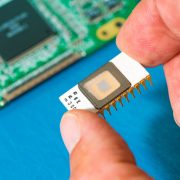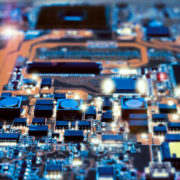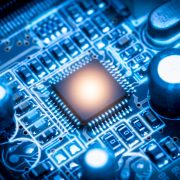A study was able to determine how mixed signal ASIC was able to accelerate diverse machine-learning (ML) algorithms.
Knowing machine-learning algorithms
Basically, machine-learning algorithms process huge datasets rapidly, giving helpful insights to a particular outcome. Nowadays, there are many emerging applications that has increasing dependencies on the ability to extract patterns from huge data sets in support to inference and decision-making with ML algorithms.
Thousands of data sources are analyzed simultaneously using machine learning algorithms. This makes it impossible for human traders to achieve. That is because machine learning algorithms can help them squeeze a slim advantage over the market average.
ML algorithms offer higher performance in comparison to humans particularly in cognitive and decision-making tasks. However, more computing capability is needed due to the complex computation in processing larger amounts of data.
Meeting challenging demands
The challenges in meeting the computational demands of general purpose processors, the use of specialized processors has been applied. As a result, such ML accelerators will be able to deliver orders of magnitude higher energy efficiency more than general purpose processors can provide.
However, the use of analog or mixed signal accelerators can be useful for improving the energy efficiency of machine learning accelerators. Comparing these to traditional large-signal computations in the digital domain, these are much more energy-efficient.
But still, such accelerators lack the programmable architecture, compiler support, or instruction sets to support architecture software. These are important in supporting high-level programming languages like Julia or Python.
In addition, there are tradeoffs in energy versus accuracy due to the algorithmic error tolerance in allowing hardware-level small-signal computations. with this case, there must be a control at the application level to meet the application domain accuracy or precision goals.
In such a case, there is a need for careful hardware, instruction set architecture, and compiler design.
Designing programmable mixed-signal accelerators
The use of programmable mixed signal accelerator can address the challenges in the previous applications. This can help diverse ML algorithms to accomplish a high level of programmability without affecting mixed-signal accelerator efficiency for specific machine-learning algorithms.
Basically, mixed signal ASIC uses both analog and digital circuits on a single semiconductor die. This is most common in smart mobile phones as mixed signal designs are everywhere.
Advantages of using mixed signal ASIC
- Exposes instruction set mechanisms to allow software to control over the said tradeoffs in energy vs. accuracy
- Supports the compilation of high-level languages
- Offers an alternative line of integration through the use of computer memory
- Energy benefits through optimal swing values gained through compiler directed energy optimization
Conclusion
Overall, the utilization of the first end-to-end design of mixed signal ASIC will accomplish high-level programmability. This aims to do it without compromising the efficiency of mixed signal accelerators for particular machine learning algorithms.
The development of a new technology has enabled software control over tradeoffs in energy versus accuracy. It also supports the compilation of high-level languages down to the hardware. Thus, it has better energy efficiency compared to digital ASICs even with much greater programmability.
This also shows significant energy savings resulting from tolerable small programmer-specified errors.
Need a proposal? Click here to get in contact with one of our specialists!
Linear MicroSystems, Inc. is proud to offer its services worldwide as well as the surrounding areas and cities around our Headquarters in Irvine, CA: Mission Viejo, Laguna Niguel, Huntington Beach, Santa Ana, Fountain Valley, Anaheim, Orange County, Fullerton, and Los Angeles.












